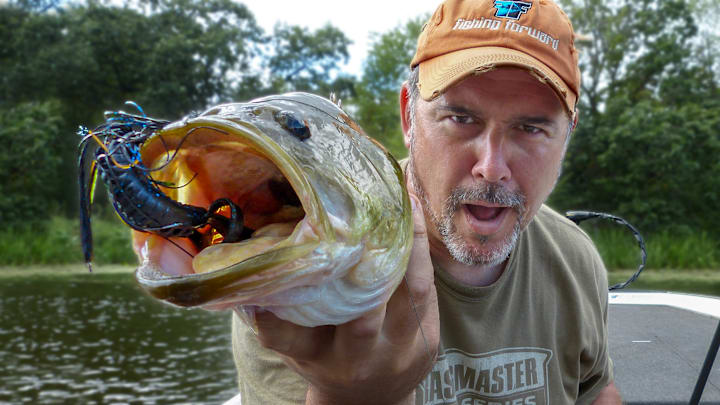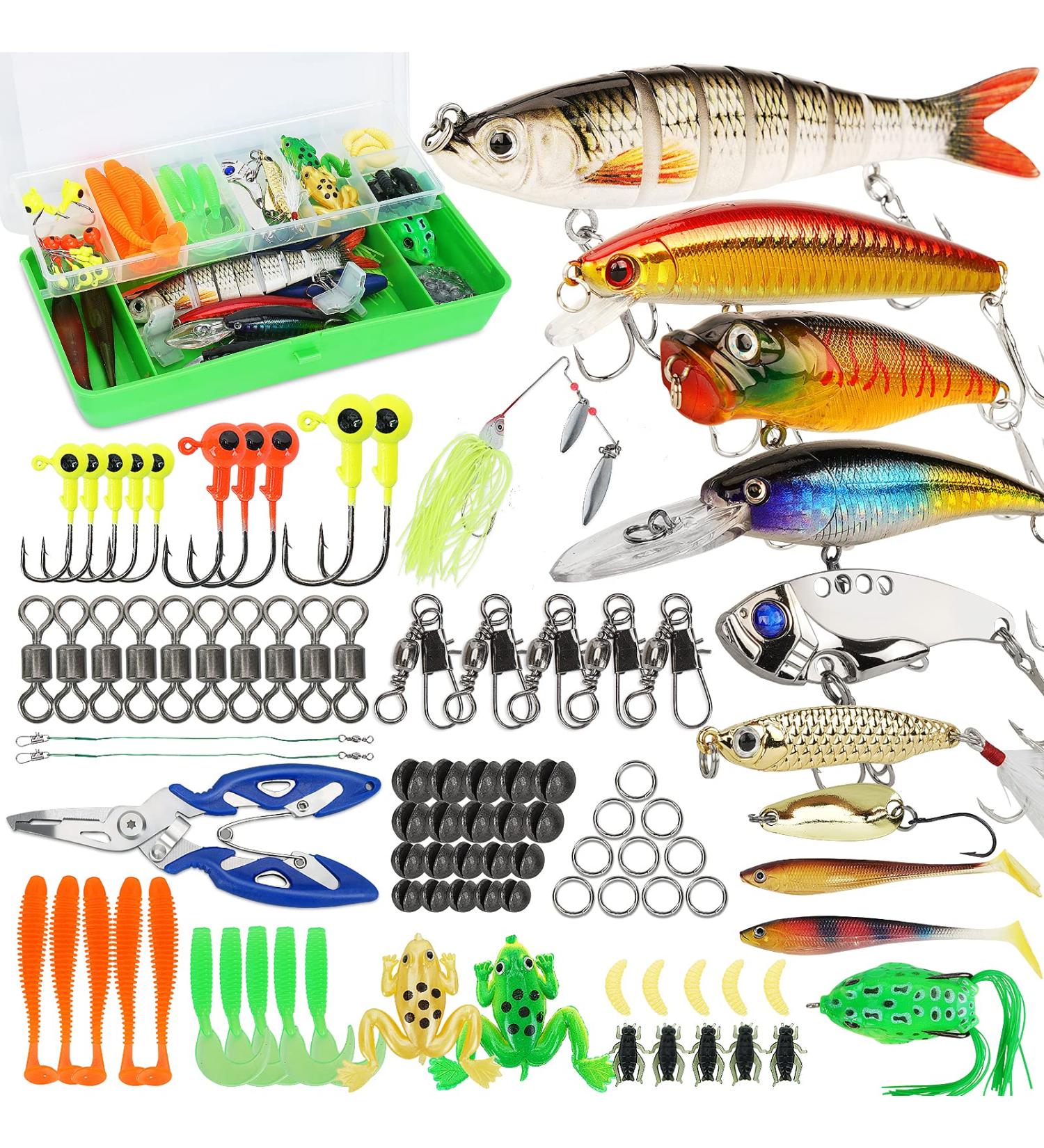Largemouth vs. Smallmouth: Species-Specific Best Bass Lures to Try
Wiki Article
Check out the Tricks Behind Efficient Bass Lures to Boost Your Fishing Experience
Comprehending the complexities of bass Lures can greatly influence angling success. Various Lures serve distinctive functions, from crankbaits designed for large protection to jigs that target particular structures. The efficiency of these Lures usually rests on variables such as color, activity, and seasonal patterns. By understanding these elements, anglers can open a more gratifying experience. The question stays: which strategies will produce the ideal results on the water?Recognizing Bass Habits and Environment
Recognizing the behavior and environment of bass is important for fishermens seeking success on the water. Bass are versatile fish discovered in different freshwater settings, consisting of lakes, rivers, and fish ponds. They tend to like locations with framework, such as immersed rocks, fallen trees, and aquatic vegetation, which offer shelter and hunting premises.Seasonal patterns substantially affect their behavior; in warmer months, bass frequently inhabit superficial waters, while they pull away to deeper locations during chillier periods. Bass Fishing Lures. Their feeding behaviors are opportunistic, with a diet plan consisting mostly of smaller fish, insects, and shellfishes
Time of day additionally plays a function; bass are much more active throughout late nights and early mornings. Climate condition can affect their behavior also, as cloudy days might motivate shallow feeding, whereas bright sunshine commonly drives them to look for cover. Acknowledging these patterns furnishes anglers with the knowledge required for efficient angling approaches.
Kinds Of Bass Lures and Their Uses
A selection of bass Lures are necessary tools for fishermens intending to attract this prominent game fish. These Lures can be classified right into numerous types, each serving distinctive purposes. Crankbaits, created to resemble the swimming activity of baitfish, are efficient for covering huge areas quickly. Spinnerbaits, featuring turning blades, develop vibrations and flashes that can lure bass hiding in cover. Jigs, with their heavy heads and weedless style, are perfect for lower fishing, permitting anglers to present lure near structures where bass often prowl. Soft plastics, such as worms and animal lures, provide versatility and can be set up in multiple ways to adapt to varying conditions. Topwater attractions, like poppers and frogs, are best used throughout low-light hours when bass are actively feeding upon the surface. Each kind of appeal plays a vital function in boosting angling experiences and increasing the chance of successful catches.
Design and color: What Brings In Bass?
What elements affect bass destination to particular appeal colors and designs? The interplay of light, water clarity, and the native environment plays a vital role. Bright colors, such as chartreuse and orange, can capture a bass's eye in dirty waters, while a lot more suppressed tones like environment-friendlies and blues may master clear conditions.Design elements, consisting of shape and movement, additionally significantly effect bass destination. Lures that simulate all-natural prey, such as baitfish or crawfish, are particularly effective. Additionally, the visibility of sensible details, like scales or fins, enhances the realistic appearance, additional luring bass.
Mental elements, such as a bass's feeding behaviors and territorial impulses, should not be overlooked. In certain circumstances, bold layouts can prompt a response from hostile bass, while refined variations can interest much more careful fish. Inevitably, comprehending shade and design nuances is crucial for enhancing attraction performance.
Matching Lures to Water Issues
Selecting the right attraction entails even more than just design and color; water problems play a significant duty in establishing the most efficient alternatives. Aspects such as water deepness, clarity, and temperature level directly affect bass habits and their feeding patterns. In clear water, refined discussions and all-natural shades have a tendency to be more reliable, while murky conditions may require brighter, a lot more vibrant Lures that can stand out.Temperature level also impacts bass task; during warmer months, faster-moving Lures can generate strikes, whereas cooler temperatures may call for slower, more intentional presentations. Additionally, much deeper waters usually demand larger Lures that can get to the desired depth, while superficial areas are much better matched for lighter, surface-oriented choices.
Strategies for Effective Lure Presentation
Grasping the techniques for efficient appeal presentation can dramatically boost fishing success. Anglers ought to concentrate on the rate and rhythm of their retrieves, adapting them to resemble the all-natural activity of prey. A consistent get jobs well for lots of appeals, but incorporating stops can cause strikes from extra cautious fish. Additionally, varying the depth of the appeal is vital; making use of various spreading angles and readjusting the reel can aid target fish at numerous depths.Using a combination of skill discussions, such as twitching or dragging the appeal throughout the bottom, can likewise be reliable. It is necessary for fishermens to check out the water and readjust their strategies based upon presence and framework. Presenting Lures near cover, like immersed rocks or plant life, usually generates far better outcomes, as bass have a tendency to seek shelter. Ultimately, experimenting with different techniques will lead to a more fulfilling angling experience.
Seasonal Considerations for Entice Selection
Seasonal modifications substantially affect bass behavior and lure effectiveness. As water temperatures fluctuate, fishermens must adjust their attraction choices to align with pre-spawning and post-spawn conditions. Recognizing these seasonal patterns can improve angling success by targeting bass at their most active times.Seasonal Water Temperature Level Impacts
As water temperature levels rise and fall throughout the year, bass behavior and feeding patterns change, influencing Bass Lures the effectiveness of different appeals. Throughout cooler months, bass often tend to end up being lethargic, preferring slow-moving Lures that imitate struggling target. On the other hand, as temperatures rise in springtime, bass become extra active, making much faster, more hostile Lures effective. Mid-summer sees bass seeking much deeper, cooler waters, demanding the use of Lures that can reach these depths. As temperatures begin to go down in autumn, bass typically feed greatly in preparation for winter season, making functional Lures that can mimic a selection of forage types especially successful. Recognizing these seasonal temperature level effects allows anglers to select suitable Lures that line up with bass actions, optimizing their angling success.Pre-Spawning Entice Choices
What aspects influence the selection of Lures throughout the pre-spawning period for bass? Anglers have to take into consideration water temperature level, weather problems, and the bass's feeding behavior. As temperature levels increase and days extend, bass come to be extra aggressive and energetic, motivating a shift in their feeding patterns. During this time around, tempts that resemble the all-natural target of bass-- such as shad or bluegill-- are particularly effective. Popular choices include spinnerbaits, lipless crankbaits, and jigs, which can be fished at various depths. Furthermore, anglers ought to concentrate on locations with cover, such as immersed vegetation or rocky frameworks, as these areas usually bring in pre-spawn bass. Bass Fishing Lures. Comprehending these aspects can dramatically improve the chances of an effective fishing expedition during this vital seasonal phasePost-Spawn Techniques Adjustments
Although post-spawn bass display different habits than during the pre-spawn stage, reliable appeal selection remains crucial for fishermens aiming to target them efficiently. After spawning, bass usually come to be sluggish and look for deeper waters, making it necessary to change lure options appropriately. Anglers should consider making use of slower-moving baits, such as jigs or soft plastics, which can entice bass that are less hostile. Crankbaits with a subtle action can likewise be efficient, permitting a slower presentation that mimics the natural post-spawn forage. Additionally, angling near framework, such as immersed greenery or rocks, can enhance possibilities of success. By understanding these seasonal modifications, anglers can enhance their fishing experience and enhance their catch rates during the post-spawn period.Regularly Asked Inquiries
How Do I Select the Right Pole for Bass Angling?
To select the best rod for bass angling, one should think about the pole's action, size, and power. A medium to medium-heavy rod, around 6 to 7 feet, is typically ideal for flexibility and control.
What Is the most effective Time of Day to Catch Bass?
The finest time of day to capture bass is generally early morning and late mid-day. Throughout these durations, bass are much more active, feeding near the surface area, making them easier targets for anglers utilizing reliable lures.Exactly How Do Weather Condition Problems Impact Bass Fishing Success?
Weather significantly affect bass angling success. Warmer temperature levels and overcast skies usually motivate bass activity, while cold spells can trigger lethargy. Rainfall can likewise improve feeding actions, making it vital for anglers to adjust their techniques accordingly.
Can I Make Use Of Lures for Other Fish Variety?
Yes, draws made for bass can additionally work for other fish varieties. Selecting the proper size, shade, and action according to the target types and their feeding habits stays important for success.What Are Common Errors When Making Use Of Bass Lures?
Common mistakes when using bass Lures include picking unsuitable sizes or shades, fetching too swiftly, falling short to adapt to climate condition, and ruling out water depth. These errors can substantially lower the opportunities of a successful catch.As water temperatures vary throughout the year, bass actions and feeding patterns change, influencing the efficiency of different appeals. Mid-summer sees bass looking for much deeper, cooler waters, necessitating the use of Lures that can get to these midsts. Post-spawn bass exhibit different behaviors than during the pre-spawn stage, reliable lure option stays important for anglers intending to target them effectively. After generating, bass typically come to be inactive and seek deeper waters, making it crucial to adjust appeal selections as necessary. Typical mistakes when making use of bass Lures consist of choosing improper sizes or colors, fetching as well rapidly, failing to adapt to weather conditions, and not taking into consideration water deepness.
Report this wiki page